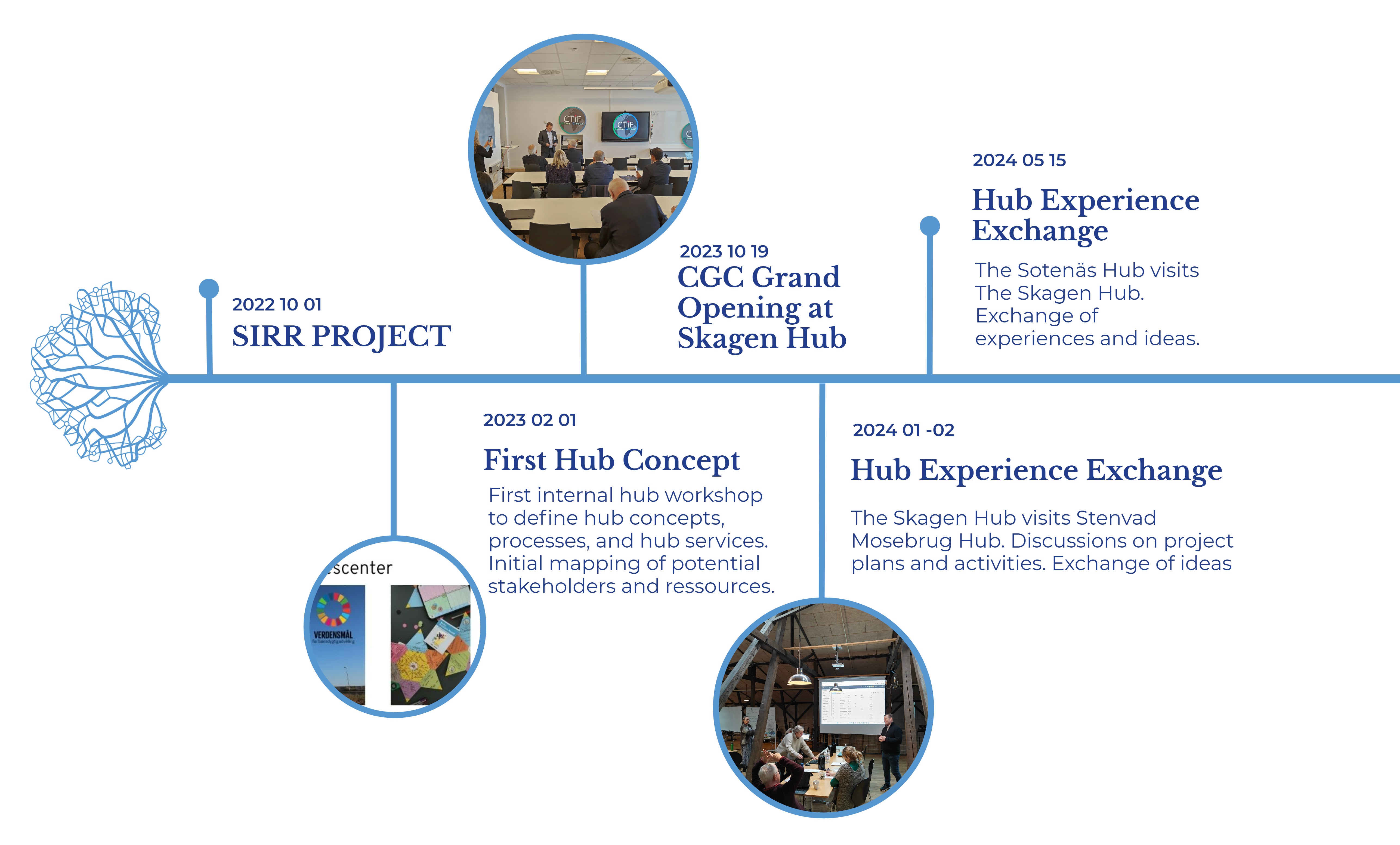
Skagen harbour
Skagen Hub Pilot: Demographic (and other) challenges
Skagen, located in the northernmost tip of Denmark where the North Sea and Baltic Sea meet, is a picturesque coastal town renowned for its natural beauty, rich history, and vibrant arts community. With its charming houses, sandy beaches, and rugged dunes, Skagen exudes a unique charm that has captivated artists and visitors for centuries. Skagen is also known for its maritime heritage, with a bustling harbor where fishermen still bring in their catch and maritime industries thrive.
However, like many other places outside the larger urban centers Skagen faces structural challenges when it comes to demographic characteristics.
The decrease in the permanent resident population poses challenges for maintaining local services and sustaining community infrastructure. As the permanent population shrinks, there may be concerns about the economic viability of businesses catering primarily to year-round residents.
The influx of aging part-time residents, particularly during the summer months, brings both opportunities and challenges. On one hand, these residents contribute to the local economy through seasonal spending and property investments. However, they may also place additional strain on healthcare and social services.
In this context the Skagen Hub has outlined several specific challenges based on the most recent demographic prognosis:
- A decrease in the overall population, particularly in the working-age group (16-64), can lead to a shrinking labor force. This could result in challenges for local businesses in finding skilled workers, potentially impacting productivity and economic growth in the area.
- With a growing population of residents aged over 80 and a decline in the working-age population, there may be increased demand for healthcare services and eldercare facilities. Skagen will need to ensure that it has adequate infrastructure and resources to support the needs of its aging population, including healthcare facilities, home care services, and specialized support for seniors.
- The decrease in the number of children aged 0-16 may lead to challenges for the education system, including declining enrollment in schools and closure of educational institutions.
- As the population ages and becomes more concentrated in older age groups, there may be challenges in fostering social integration and community engagement, particularly among different generations.
- Changes in population demographics may impact housing demand and infrastructure needs in Skagen.
Stay tuned to learn more about how the Skagen Pilot Hub and the SIRR-project work on approaching younger people and try to engage them in local development processes.
About us
Skagen Uddannelscenter is a locally rooted training centre and development facilitator, organised as a non-profit organisation.
For more than 30 years we have facilitated and supported local development and resilience through education and skills development, establishment of teaching facilities for young people and adults, project development, financing and networking.
We bring to the project strong skills and experience in establishing local collaborations and networks, development and management of national and European cooperation projects, budgeting and financial management as well as organisation of communication activities.

Setting: Rural/Coastal area in the region of North Jutland, Frederikshavn municipality (Denmark). Located on the border of the North Sea and the Baltic Sea.
Main regional business: Fishing. Tourism.
Challenges in focus: Engaging public authorities. Dropping the label “Skagen Education Center upskilling the unemployed” to “Skagen an innovative hub assisting local companies and organizations with their development plan”. Housing problems.
